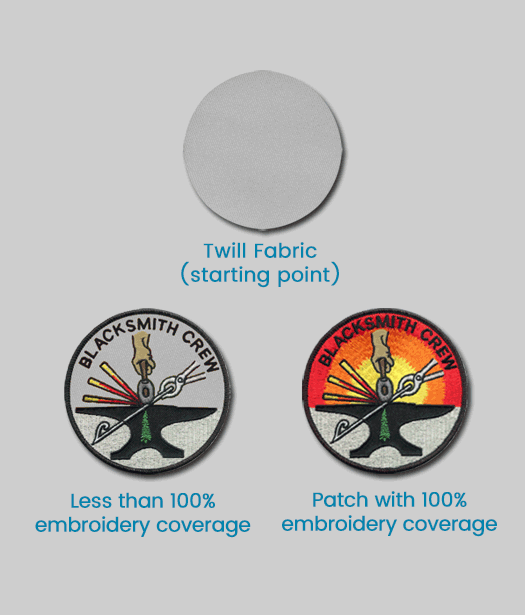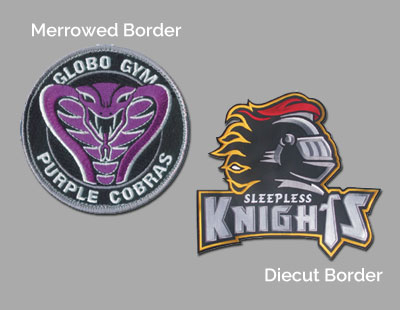Embroidery Percentages
Every embroidered patch starts with a piece of twill fabric, and then threads are stitched on top of this fabric. Embroidery coverage simply refers to whether or not the entire surface of the twill will be covered by thread.
As you can see in the above example, the patch with less than 100% embroidery coverage has an unstitched background, leaving the gray twill exposed. This is ideal if your design has a large area of solid color. It is also a lower cost option.
Now moving on to the 100% embroidery example. On this patch, thread completely covers the twill. There is no gray showing. The customer decided that they wanted a multi-colored background, therefore making 100% embroidery necessary.
The decision to order a patch with 100% or less than 100% thread coverage is simply a matter of preference. Many customers prefer 100% because of the thickness and fullness it adds.


